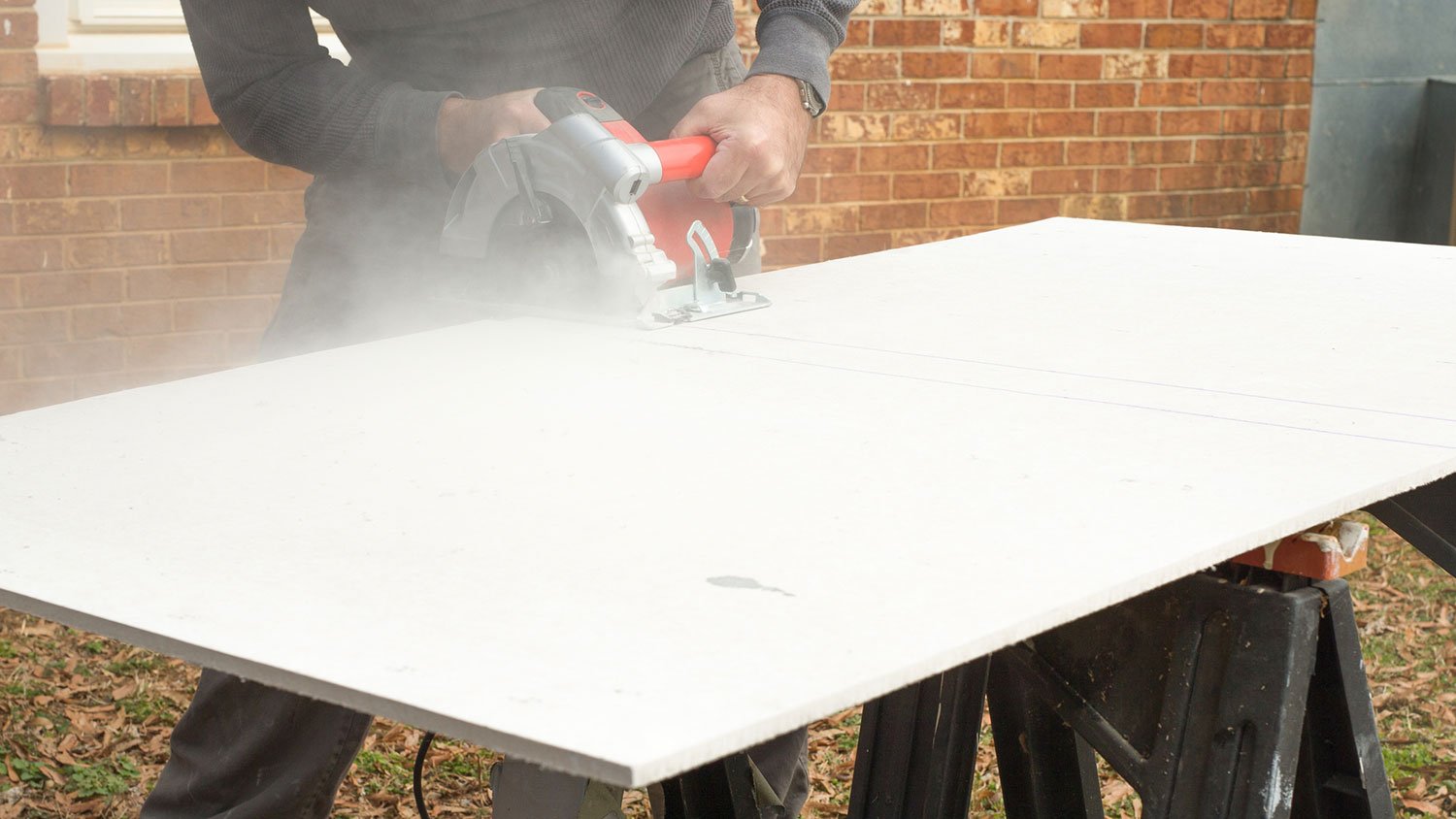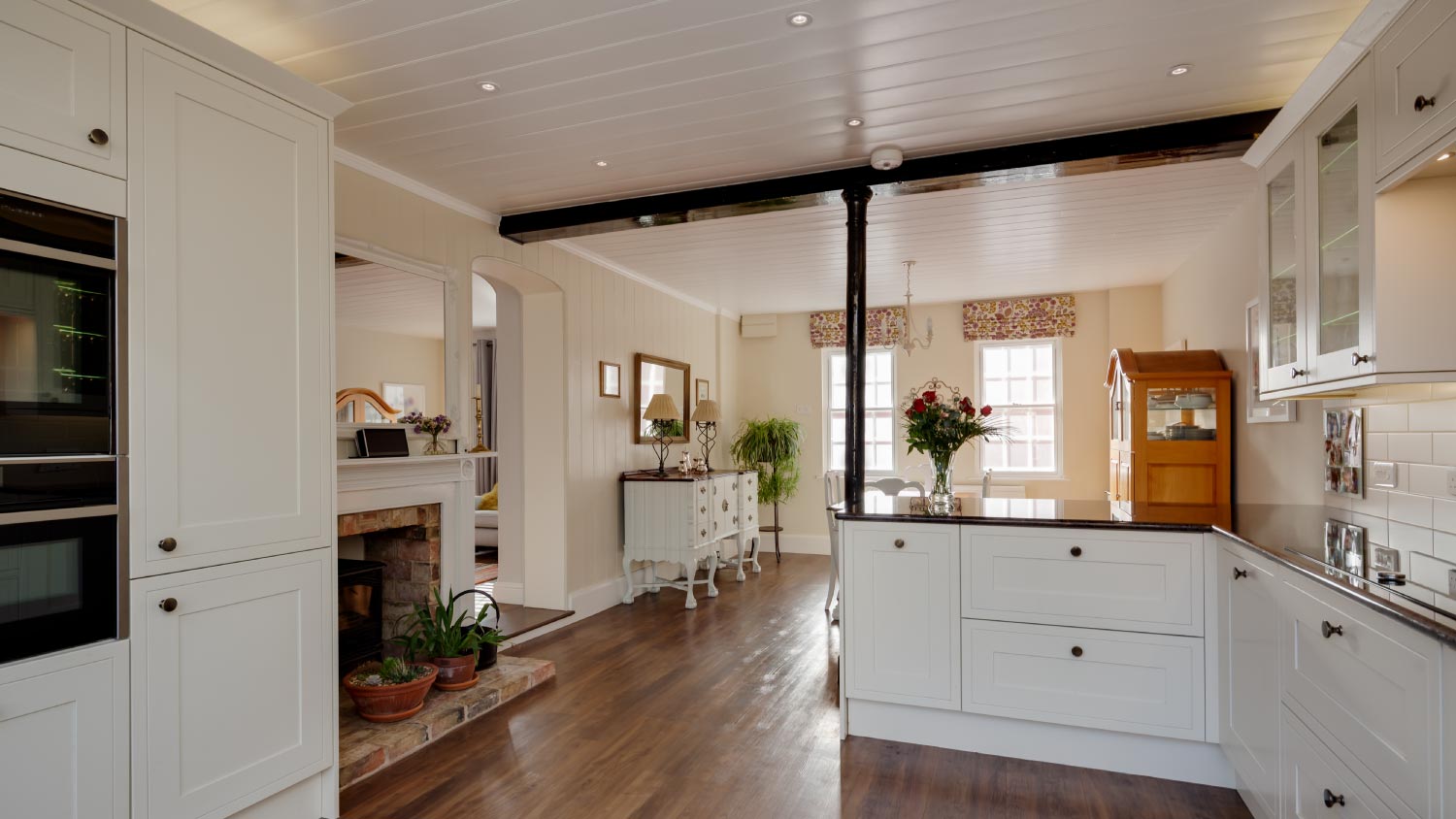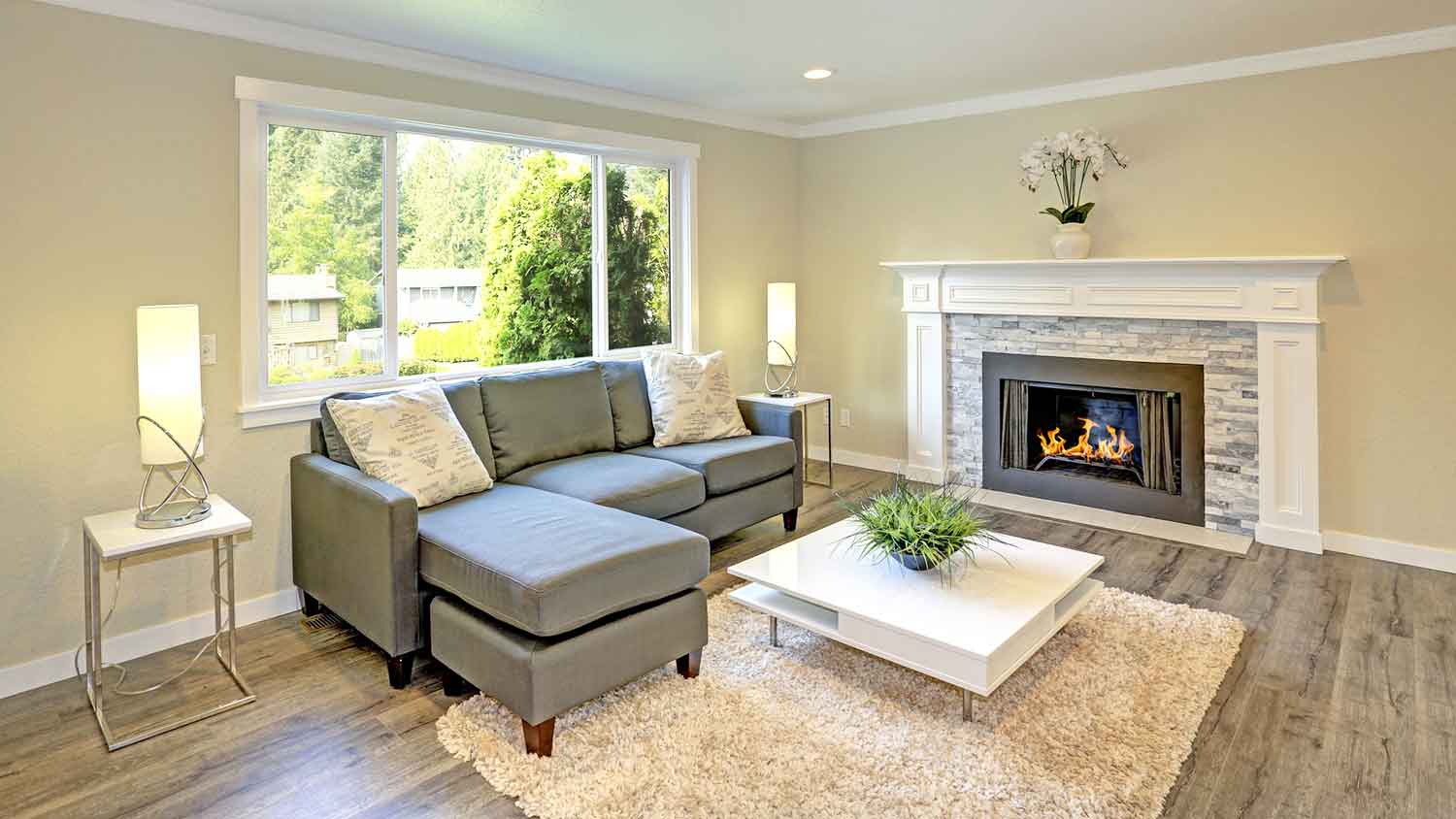
Skim coating drywall is a great alternative to replacement, and is often more affordable. Use this guide to estimate the cost to skim coat walls in your home.
Cement board provides a solid, waterproof base for laying tiles


Whether you’re installing a ceramic tile floor, tiling a kitchen backsplash, or building an entire tile shower, you need a solid base on which to create your masterpiece. Cement board is the premier construction material to make that happen. Better than a drywall or plywood substrate, cement board is almost as easy to install and provides a water-resistant, mold-free, and durable work surface. However, it’s made with concrete, so it can be difficult to cut. In this guide, we’ll explain how to cut cement board quickly and easily using a variety of tools, including a utility knife.
Cutting cement board kicks up a lot of silica dust, which is dangerous to breathe and a pain to clean up. Work in a well-ventilated space or outdoors, if possible.
If you must cut cement board indoors, secure plastic sheeting over entrances to the room with painter’s tape and close all vents to limit dust moving through the air in your home. Lay a drop cloth or plastic sheeting on the floor to reduce cleanup. Cover your vanities, toilets, and other furniture and large items with plastic sheeting, too.
Put on protective clothing, including work gloves, safety goggles, and a sanding respirator, when cutting cement board. Wearing a sanding mask is critical, even if working outdoors or in a well-ventilated space. The silica dust from the board can cause lung irritation and shortness of breath (or worse with prolonged exposure).
Beyond gear, follow safety precautions when working with knives and saws. Always follow the proper safety guidelines for power tools.

Draw a line with a pencil to mark where you want to cut, or place a straightedge along the line.
Press down the straightedge and move the utility knife blade along the line. Turn the board carefully to follow the same line from the other direction. Score the line again. You may need to score the board several times, depending on its thickness and the sharpness of your blade.
Safety note: Blades can be very hot after cutting, so place them in a safe spot to cool before throwing them in the trash. You may go through several knife blades when making cuts.
Use a circular saw with a masonry cutting disc for cuts that don’t extend the length of your material or for large-scale projects where you’re making dozens of cuts. Power saws work faster but create more dust, so stick with a utility knife if you’re making just a few cuts.
Place the cement board face down on a pair of sawhorses. Measure and use a pencil to mark your cut. Set the depth of the blade to no more than 1/2-inch deeper than the material.
Align the saw at the board's edge, and use a T-square to maintain a perfectly straight cut. Turn the saw on to full speed and push the saw slowly and smoothly along the line.
You can cut curved lines or circular shapes in cement board with a jigsaw fitted with a carbide blade.
Place the board on a sawhorse face-up. Mark the shape of your cut with a pencil. Drill a 3/8-inch hole somewhere along the line with a masonry drill bit. Insert the blade into the hole and bring the saw to full speed. Push the jigsaw slowly and smoothly along the line. You may have to use more than one blade for long cuts since they get dull quickly.
Jigsaws also work well for cutting holes for outlets and switches. Just drill four holes in the corners of the cutout and then use the saw to connect them and punch out the material.
Set the scored sheet over a thin piece of scrap wood, aligning the edge of the wood with the scored line. Apply force to snap the board along the line with your body weight or foot. Use the utility knife to cut any remaining mesh between the two pieces.
If you’re cutting a hole, use a hammer to lightly punch out the hole. Clean up the jagged edges with a utility knife.

Cutting cement board isn’t difficult, but there are a few tips you can follow to keep the project moving along as smoothly as possible.
Measure twice, cut once.
Run the blade over the cut line several times when scoring and snapping. The deeper the groove you create, the easier and cleaner the board will snap.
Always work on a clean and sturdy surface clear of tripping hazards and debris.
Avoid using a hole saw to make circular cuts in cement board. The teeth will quickly become dull and render the tool useless for anything in the future.
Cutting cement board with a diamond blade and a grinder is possible and effective. However, the practice isn’t as safe or accurate as using a circular saw to achieve the same cuts.

If you’re planning to do a DIY tile project from scratch, learning how to cut cement board properly is necessary. It’s also an excellent way to save money on your bathroom remodel.
However, cutting cement board creates irritating and hazardous dust, and it just might not be your favorite weekend project. If you have safety concerns or want to save yourself time, a local drywall installer or local bathroom remodeling company can help.
You will spend around $3.00 per square foot for professional cement board installation, which is around $2.00 more expensive than if you installed it yourself. That added cost for labor could be worth it, though, as any mistakes in the backer board installation will likely show in your finished tile work.
From average costs to expert advice, get all the answers you need to get your job done.

Skim coating drywall is a great alternative to replacement, and is often more affordable. Use this guide to estimate the cost to skim coat walls in your home.

Drywall texture can create an attractive finish and add dimension to your home’s walls. This guide breaks down the factors that influence the cost to texture drywall.

Installing beadboard ceilings is a great DIY project. Learn what to expect cost-wise from this project, whether removing or covering a popcorn ceiling.

Whether you’re renovating a room or finishing a home addition, this guide on how to cut drywall will make your job easier and help keep your home neat.

Don’t forget about room corners in your plans for smooth, seamless walls. Learn how to drywall corners like a pro with this step-by-step guide.

If you’re wondering who to call for drywall repairs, look no further. This drywall repair contractor hiring guide will help you choose a contractor.